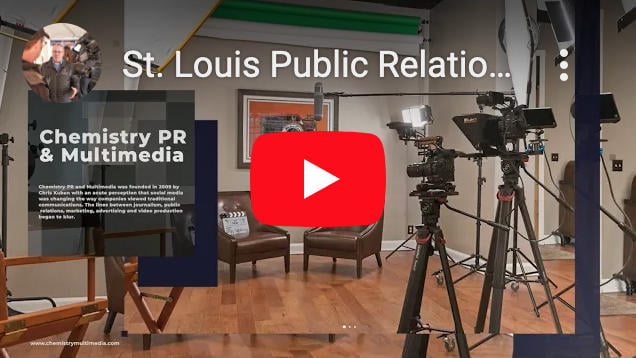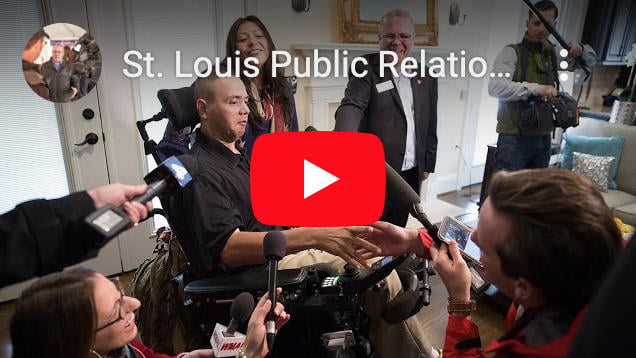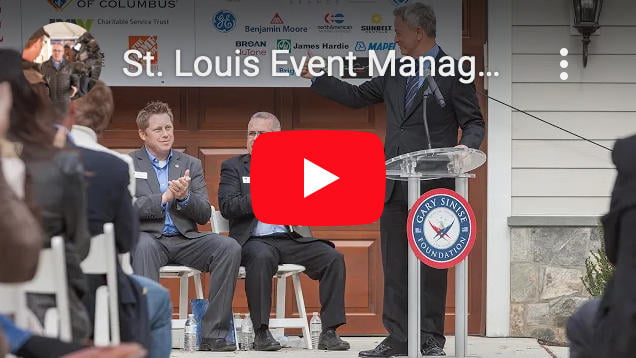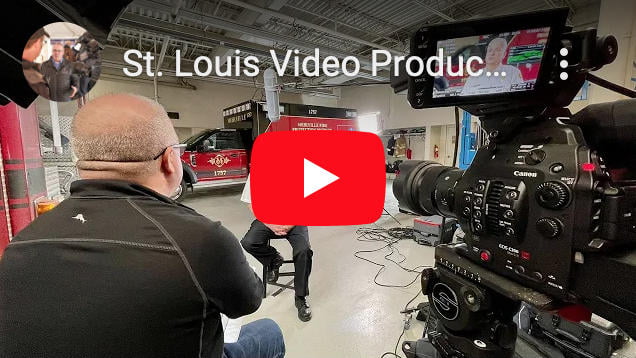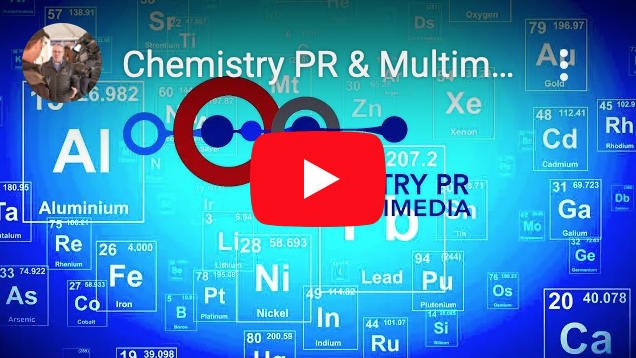The Art of Messaging
While in graduate school studying Public Relations at Webster University in St. Louis, Missouri nearly 18 years ago, I took one class I believe, was the most important class I would ever take. Today, I consistently say that I learned everything I needed to know in Public Relations in that one class. Everything else I learned in the field. In addition, even though I am still paying off student loans from my graduate studies, I owe my successful career to one man and one class. I learned the true Art of Messaging!
The class was titled “Crisis Communications” and Tripp Frohlichstein, one of the foremost crisis communication experts in the United States, taught it. Taught over spring break, those of us in the class lived through constant crisis scenarios both on-air and off. The unconventional class started at 8:00 each morning, Monday through Saturday and ended around 11:00pm each day. It was exhausting but we learned, through intensity, the ability to communicate effectively and stay on message through any crisis.
I tell this story for one reason. No matter what type of Public Relations you are involved in (ie: Representing a corporation, non-profit, political candidate, product, person or place), identifying the key messaging strategy is the most important part of representing any organization.
Simply put, publicity molds public opinion more effectively than a paid advertisement. Your message, whether it appears in the context of the “news” or you are being interviewed as an expert, carries additional weight in the court of public opinion. Therefore, keeping on message is the most important part of your job.
With social media, there are endless opportunities to re-post your segments. The value of being in the media goes up due to the infinite abilities to reuse those digital clips to promote your message! This fact needs to be reemphasized: if you are on TV, Radio or in Print, those same files are now placed in online digital format 90{fb2cd6ecc5ea822e7d55867f94952838aab4b89ae39846a722113040866900c7} of the time and they give you the opportunity to reuse those files in marketing, promotion or public relations efforts of your organization.
Your organization may have many messages and, in many cases, your organization may not even know what your main messages should be, let alone how to get those messages to your main audience. Figuring out who the target of your messages are, whether shareholders, employees, the community or your customers, can produce very different outcomes.
When developing your messaging, you must first understand what your identified target audience is and what type of message you want to convey. In many cases, your message will boil down to a concern for your customers and how your company can help them.
“HOME BASE”
One of the key communication philosophies developed by Tripp Frohlichstein for Public Relations is the concept of the “HOME BASE” from which to effectively communicate. Let me explain…
Narrowing your message down to the simplest and most basic concept is easier than you may think. Home Base consists of your main message and your single most important communication objective.
I love Baseball! I likened the “Home Base” principle to one of the most important parts of winning a baseball game. A player might hit a home run; he or she might hit a single and a double or even a triple. However, if your entire goal as the Public Relations Representative is to get to Home Base in your communications, you need to start with a Home Base messaging strategy. With this Home Base strategy, you can hit a home run every time you or your client is interviewed.
In relating your message to the “Home Base” principle your main message needs to be a simple, easy to understand phrase that can be used multiple times throughout your interview. Remember you have a limited amount of time to get a good sound bite. You might be interviewed for 30 minutes but your final edited soundbite may be only 30 seconds long.
What would you like your message to be? Consistently answering questions with some form of your “Home Base” message will carry more weight and ensure that the main message being conveyed will be heard clearly as the outcome of the produced segment.
Positive Points and Positive Proof Points
Using positive points and Positive Proof Points that prove your statements to be true are both qualitative and quantitative statements intended to reinforce your Home Base message. In the below example, you can see how these get easier to create:
Positive Point Positive Proof Points
We have Expertise Average Length of Employee Service
Product Reliability Product warranty or guarantee
Competitive Pricing Price Reductions
Assuring Delivery Quality Use of Expensive Packaging
Excellent Customer Service 24-hour Toll-Free Product
By using distinguishing points and distinguishing positive points between you and your competitors, you have to identify what will resonate most effectively with your target audience. Look at what matters most to your audience. Look at it from their perspective!
Message Mapping
In much the same way as a game day book or a roadmap, knowing what you might say and how you might say it should be mapped out as thoroughly and effectively as possible. This is done through the use of a Message Map. Frohlichstein taught that the most effective way to present your message is through the Message Map. This map combines your Home Base and your Positive Points in the easiest to understand form. All questions from a reporter then go back to a Home Base answer.
When scripting a Message Map don’t focus on the negatives, or organizational shortcomings Focus on the positives; what the organization is doing right. Identify all points of the organization and find out how and/or why they are intertwined.
In its final form, the Message Map should resemble an airline hub or a spoke map where all directions lead to your Home Base. Spokes on the map may be from employees, product line, customer services or cost. From a strategy standpoint they all lead to a focus of a concern for the customer. A Message Map should look like the below diagram:
 *Courtesy of Tripp Frohlichstein, Media Masters, Inc.
*Courtesy of Tripp Frohlichstein, Media Masters, Inc.
By using a Message Map structure, you can go into an interview with a better understanding of how you need to respond when speaking with a reporter.
Tripp Frohlichstein provided the following examples of actual message maps developed on behalf of several organizations. You can easily see that the Message Maps can be as simple as a few components or as complicated as to contain dozens of points.
*Courtesy of Tripp Frohlichstein, Media Masters, Inc.
*Courtesy of Tripp Frohlichstein, Media Masters, Inc.
*Courtesy of Tripp Frohlichstein, Media Masters, Inc.
Why is a Message Map Important?
The messaging starts with your initial pitch to media. You should always remember that in order to make news, your challenge is to tell a compelling story. When you start with your pitch always consider the reasons why an editor, reporter or producer should listen to you, and, give you credibility by telling your story.
Is your “pitch” or “hook” formulated to fit the “C’s” of news? Editors look for: Catastrophe, Chaos, Conflict, Confusion, Competition, Contradiction, Corruption, Crime, Crisis and Color (Human Interest) – And, you cannot forget the “S’s” of news: Secrets, Sensationalism and Sex.
Obviously, media outlets look for news that provides information, news that is timely, news that relates to a specific and unique action, and they pay close attention to how the news affects the local the community. Creating the compelling story is up to you, but explaining it is where most stray from the message. If you have a Message Map, you can always filter it back to your Home Base to ensure you are getting your message across appropriately.
With major cutbacks in most media outlets, reporters, editors and producers currently scramble to do more work in less time in order to produce the story. Simply put, your job is to hand them everything they need for a story … on a silver platter … and quickly!
One point that begs to be made crystal clear is this. “NO COMMENT” is NEVER an acceptable option when talking with the media. Always tell your story and do not exaggerate or lie. If you need additional time to compose your message, always ask for it. Most media outlets are on a deadline so understanding that time is of the essences is key to your message being told in a positive manor. In all circumstances, remember to funnel your comments back to your Home Base.
For the purpose of this blog post, we will focus on the content of your message when responding to media inquiries. With that said, your message development or content should focus on Brevity, Emotion, Positive Points and Preparation.
Brevity: Your complete thoughts and statements in answer to a posed question should be 12 to 20 seconds long for television, 8 to 20 seconds for radio and 40 seconds for print interviews. These are better known as soundbites.
Emotion: What you say is as important as how you say it. Your energy, enthusiasm, excitement and entertainment factors will instill a strong connection with your audience.
Positive Points: To stay on message, you must develop positive points, themes and messages, then use them frequently throughout an interview.
Preparation: Being well rehearsed with facts, figures, statements, taglines and your key messages truly makes a difference in the outcome of your interview.
Always keep in mind that when being interviewed (with the few exceptions of doing live segments) you will most likely be edited. You must be resolute to get your message across effectively. Even in hour-long live radio talk show segments, repeating your message is vitally important to the success of your message reaching its intended audience.
In baseball, getting to “Home Base” is one of the most important parts of winning a game. You might hit a home run; you might hit a single and a double or a triple and another single. Your entire goal is to get home. While communicating your message, therefore, you could be asked numerous questions, but need to have a cohesive statement that will tie every question to your “Home Base” message.
In relating your message to the “Home Base” principle, your main message needs to be a simple, easy to understand phrase that to be used multiple times throughout your interview.
Remember, you have a limited amount of time to get a good sound bite. You may be interviewed for 30 minutes, but your edited version may only be 30 seconds or 3 minutes. What would you like your message to be? Consistently answering questions with a derivative of your “Home Base” message will ensure that the main message being conveyed will be heard clearly in the finally produced segment.
When developing your message, Tripp Frohlichstein says that there are three media mistakes to avoid:
Mistake 1: Too many messages
This is confusing for the inexperienced trainee and, ultimately, the reporter. For the interviewee, when asked a question, he or she must decide which points to make or which direction to go with the answer. For the reporter, the story often gets muddled as the interviewee goes back and forth between the various messages.
Solution: Prepare one message—your “home base.”
This makes it so much easier for a spokesperson to have a specific direction for an interview. For example, imagine that a United Way spokesperson has been prepared with three messages:
- We give money to 200 agencies.
- We use the money locally.
- From each dollar, 91 cents is used directly for services.
It would be better to prepare the spokesperson with one simple “home base” message. “The United Way helps people.” Those other three messages are now available to for use in any way necessary to help support that main message.
The spokesperson might say, “Our goal is to help people. We do that by giving money to 200 agencies that then help thousands of people. It also helps people because all the money stays here, so there is a big impact on our local area. And we help people efficiently because 91 cents of every dollar is used for services.” In this example the sub-messages all relate to the “home base” message.
Mistake 2: The question does not matter. Ignore it. Just bridge to your message.
Spokeswomen and men often feel like every response must hammer away at the “home base” message, often at the expense of ignoring a reporter’s questions.
Solution: Address any question directly.
Many interviewees are afraid of a “yes” or “no.” This is unfortunate. Sometimes, it is the most effective way to start an answer. You have already answered the question, and now can explain why you said what you did.
This makes it easier to get to your “home base” message. However, the key to training interviewees to answer a reporter’s questions is to help them understand they cannot always move to that main message. If you don’t see how to transition to your “home base” message, don’t try. Simply answer the basic question and move on.
Mistake 3: Forgetting the importance of “why” in an answer.
Repeatedly focusing on the “what” of your “home base” message can lead spokesmen and spokeswomen to forget that people also want to know the reasoning behind an organization’s policy or philosophy.
Solution: Always practice the “why” portion of the answers.
For example, asked what her plans were for the coming school year, a district superintendent responded, “To improve the student-teacher ratio.” Many people’s reaction to that would be, “So what?”
If the superintendent simply added remarks to explain why, the quality of the answer would change. Her response could have been, “Having fewer students in each classroom will enable teachers to have more one-on-one time with the kids, increasing our chances of helping each child become successful.” Explaining why the statistic is beneficial really strengthened the response. Recognizing and avoiding these three mistakes will better prepare spokespeople for successful interviews.







